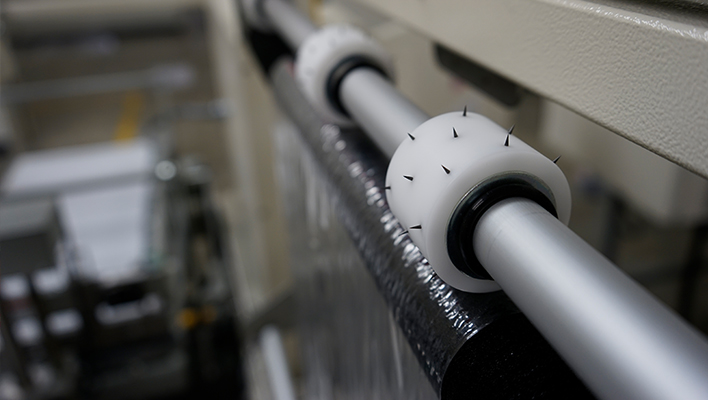
The number and placement of the holes which let the air escape from a shrinking package is very important in achieving the optimum shrink performance. If the air escapes too early, the film won’t fully shrink and, if the air does not escape in time, the bubble will burn through.
Pre-perforated film as an alternative option
Some manufacturers offer film “pre-perfed” from the factory. Usually, in a secondary operation, the film is unwound, run across rollers with uniformly spaced needles which impart a pattern of tiny holes across the entire width of the film and then rewound on a roll. For many users with non-critical or easy-to-shrink products or with equipment that has a poor or worn out perforating system, pre-perfed film is a very convenient answer. On other packages, pre-perfed film wouldn’t work because it does not allow for the precisely placed perforations necessary for the ultimate in controlled shrink and package appearance.
Unfortunately, there is no scientific formula for determining the ideal number or pattern of perforations. It is, most often, a matter of trial and error. If, however, you keep in mind the basic rules about how a package shrinks, the process goes much more quickly.
Explore how shrink tunnels work
For example, on tall packages with a large bag, the bag corners or “ears” can be extremely hard to shrink enough to give an acceptable package appearance. What happens when film is perforated uniformly as in factory perfed film, the air is allowed to escape uniformly across the entire surface of the film and the air escapes from the ears at the same time as the rest of the package. Often the solution to this problem is to custom perf the film on the wrapper only through the areas where the ears will be located so that air is forced to escape through holes forcing the film in those pockets to stay inflated until the last possible moment and achieve maximum shrink. In some extreme cases, a registered hole punch placed near the tip of each corner will also do a very nice job.
When a customer has a wide variety of products and demands the best package appearance possible, each of the products may have very different perforation requirements. Instead of having an operator constantly move perf wheels around, a dedicated perf bar can be made for each specific package. The rollers are then marked to correspond to each package description and mounted on a rack next to the film unwind for fast changeover.
